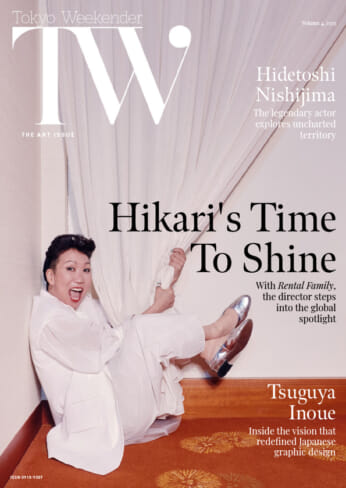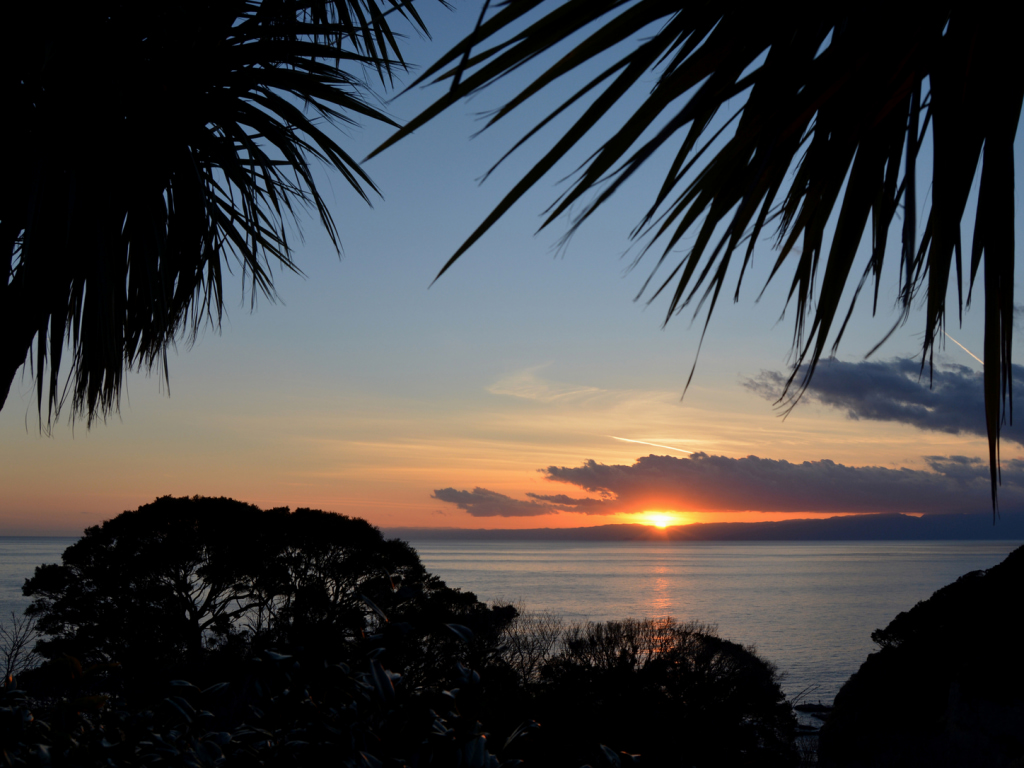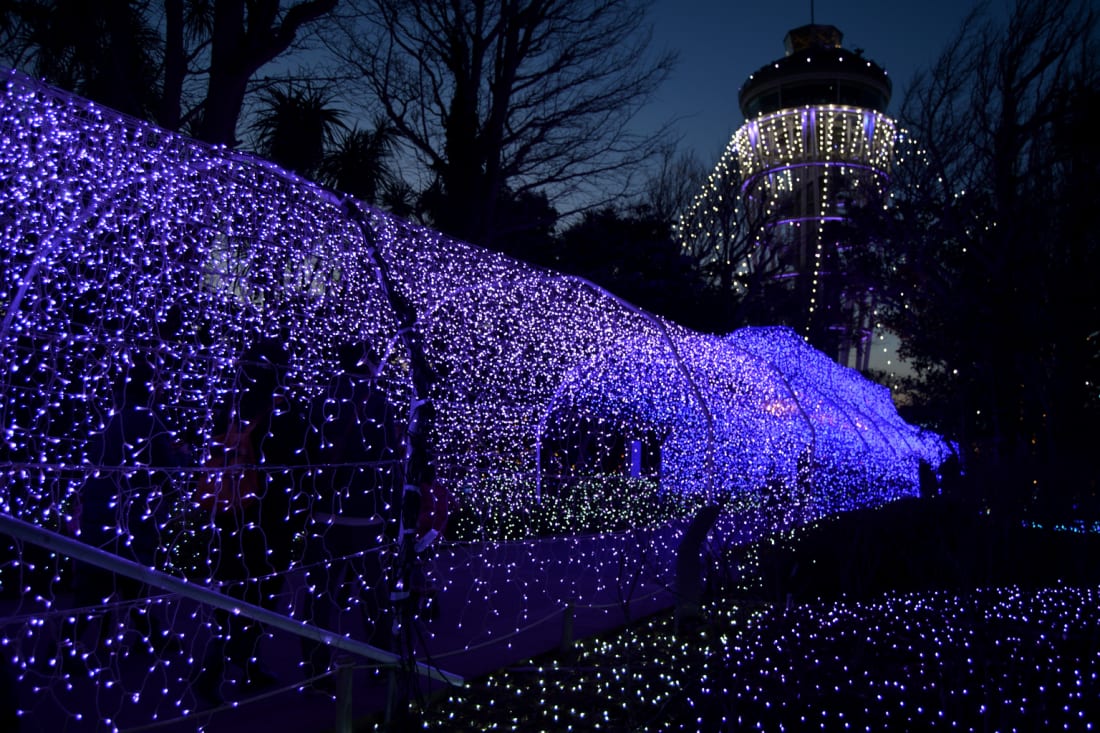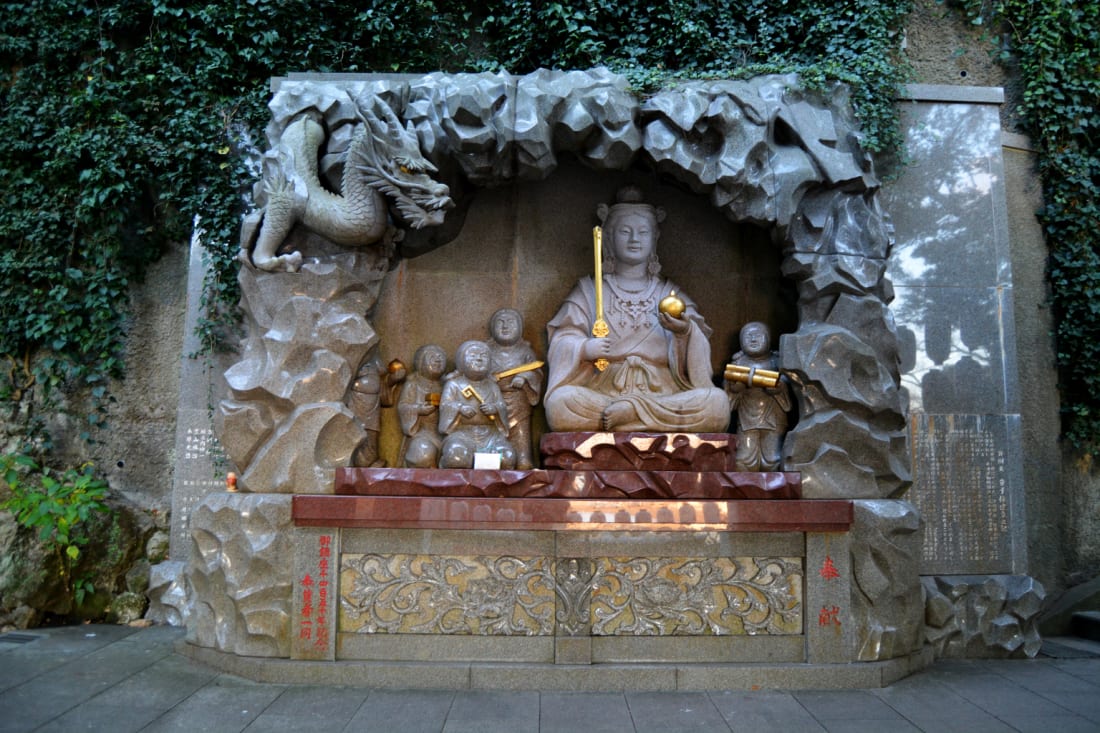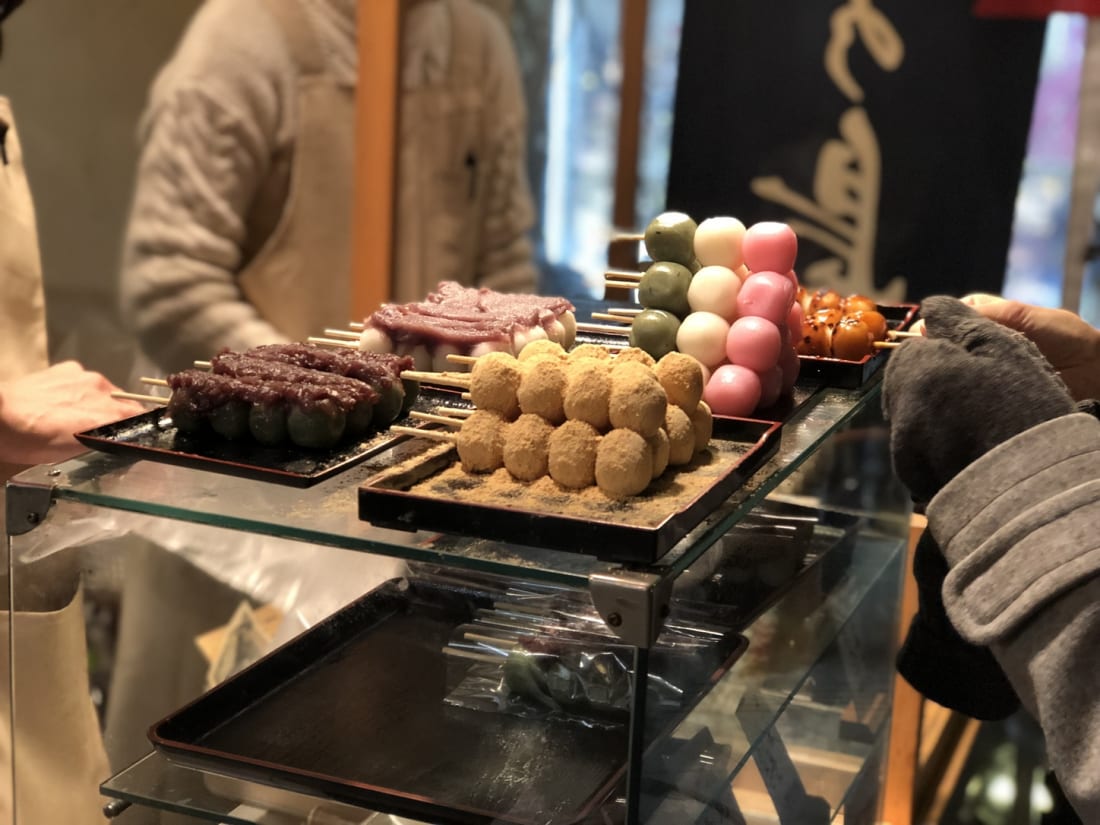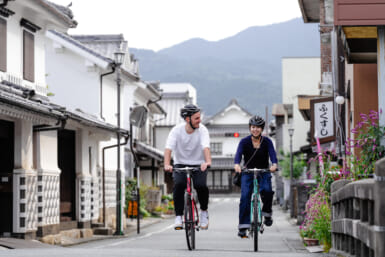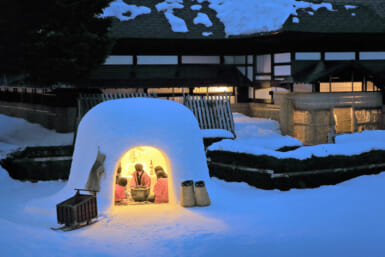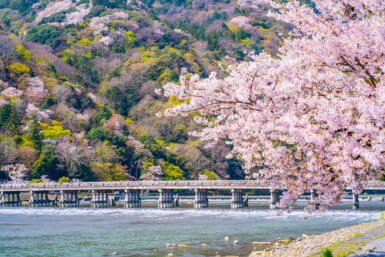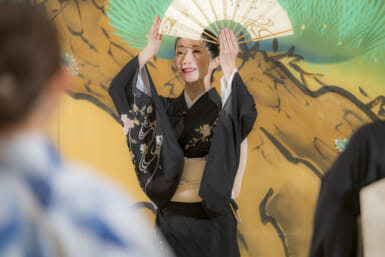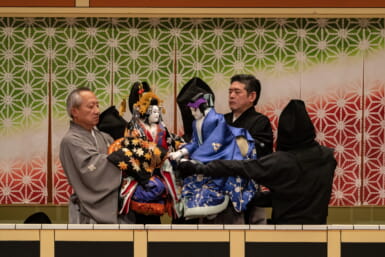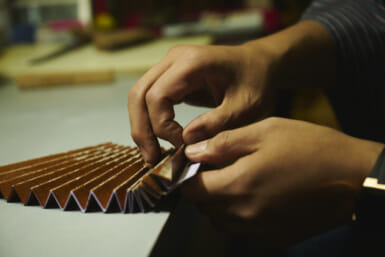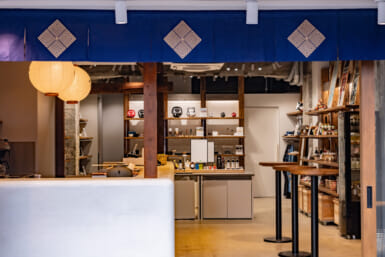The island of Enoshima is only an hour from Tokyo on the Shonan Coast and offers visitors gorgeous ocean vistas, historic shrines, mysterious caves, beautifully manicured gardens and great food, not to mention breathtaking illuminations, colorful festivals and fireworks. Due to great water conditions, abundant sunshine and temperate weather, Enoshima is a haven for surfers and will host Tokyo 2020 sailing events.
The Mystique of Enoshima Island
Now known as a laid-back beach resort popular with day trippers, Enoshima was once a popular Edo-era pilgrimage destination. According to Enoshima Engi, a history of Enoshima’s temples and shrines written in 1047 by Japanese Buddhist monk Kokei, the island’s origins can be traced to the goddess Benzaiten and the five-headed dragon Gozuryu.
For a millennium, Gozuryu terrorized villagers in nearby Koshigoe. In 552, Benzaiten caused Enoshima Island to rise from the bottom of Sagami Bay to serve as her dwelling. The dragon fell in love with her at first sight, changed his evil ways and the two eventually wed. Under their joint rule, the area prospered.
Japan’s History and Mystery
Enoshima Shrine (dedicated to Benzaiten) has existed since 552, and was originally located closer to the erosion caves at the back of the island. Hojo Tokimasa, first regent of the Kamakura Shogunate, was said to have visited to pray for prosperity and was gifted with three dragon scales, which became his family crest.
The modern shrine is made up of three separate shrines at different levels on the island. Passing through the imposing Zuishin-mon gate, you’ll encounter a stone carving of Benzaiten and Gozuryu that was commissioned for the shrine’s 1,450th anniversary.
Continuing upwards, you’ll find the second shrine Hetsuno-miya, originally built in 1206 and rebuilt in 1976. This is the most picturesque of the three and includes a grass purification wheel, dragon’s pond and small shrine dedicated to Benzaiten. For easier access, you can ride the ESCAR paid escalator to the top of the island (but note it only operates one way).
At the top, you’ll find the scenic Samuel Cocking Garden and the Enoshima Lighthouse Observation Tower (Sea Candle) that stands 119.6 meters tall. The garden hosts many of Enoshima’s annual events, including a lantern festival during Obon season in August, a candle festival in October and the magnificent winter illuminations from November–February. You can also sign up for a (Japanese-language) hands-on soba-making class at Matsumotokan.
Enoshima Eats
It’s a good idea to have lunch before proceeding, as it’s quite a hike and options are limited beyond this point. There are many restaurants with seating overlooking Sagami Bay. The local specialties are shirasu (baby sardines) and sazae (turbo shells) served a variety of ways.
Massive tako senbei (pressed crackers stuffed with grilled chunks of octopus) hot off the grill are easy to spot: look for the long lines outside flagship store Asahi-Honten. The crackers and other street foods pair well with Kamakura Brewery’s Enoshima Kölsch beer or Niigata Beer Co.’s Shonan Enoshima Beer, a witbier-style beer.
If you follow the stairs downwards from the garden, you will eventually reach Chigogafuchi Abyss and Iwaya Caves. When you enter the caves, you are given a candle to light the way. Be sure not to miss the dragon-themed artwork inside.
Enoshima Island Style
The luxurious Enoshima Island Spa offers a variety of gender-segregated hot spring baths, unique cave and waterfall pools, and an open-air pool with an outstanding view of Mount Fuji (pools require a swimsuit; bring or rent one). A variety of massages and body treatments are available at Beng Teng Spa. (Note that like most Japanese hot springs, there is a strict no-tattoo policy that applies to the entire spa.) If you’re feeling hungry after all the pampering, spring for a meal (the lunch sets are a good bargain) at the fourth-floor Island Grill Restaurant, which uses local produce and seafood to create stunning Mediterranean-influenced fare.
If you’re visiting Enoshima with kids, good options are the Hello Kitty Saryo Japanese Teahouse on the main road approaching the shrine (offering Hello Kitty licensed goods and a small menu of classic comfort foods like omurice, hamburg steak, pasta and curry, all emblazoned with Kitty-chan’s likeness), or the nearby Enoshima Aquarium. In addition to a dolphin show and capybaras, the aquarium offers adorable turtle-shaped melonpan and maritime-themed snacks in the Ocean Café.
Updated On March 19, 2025
